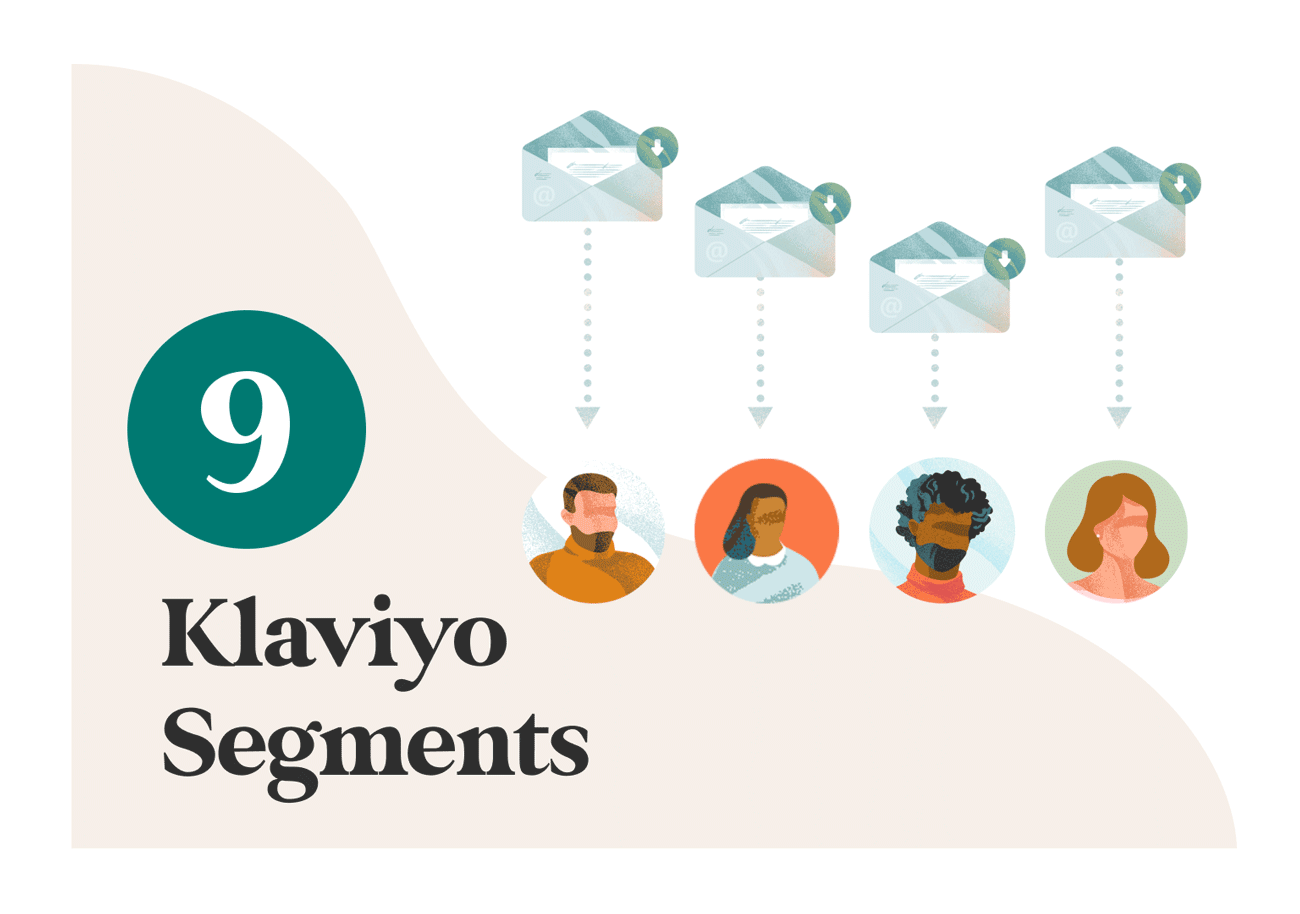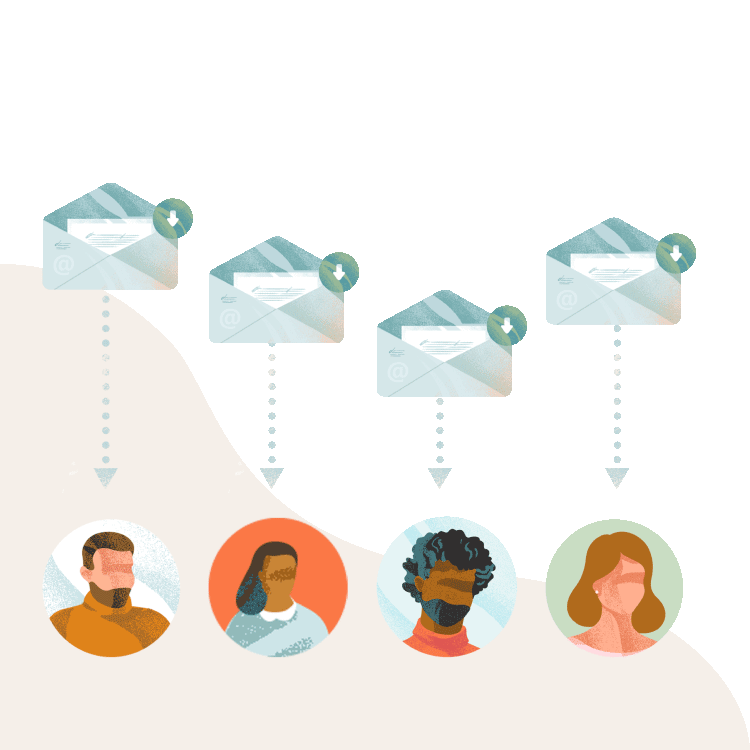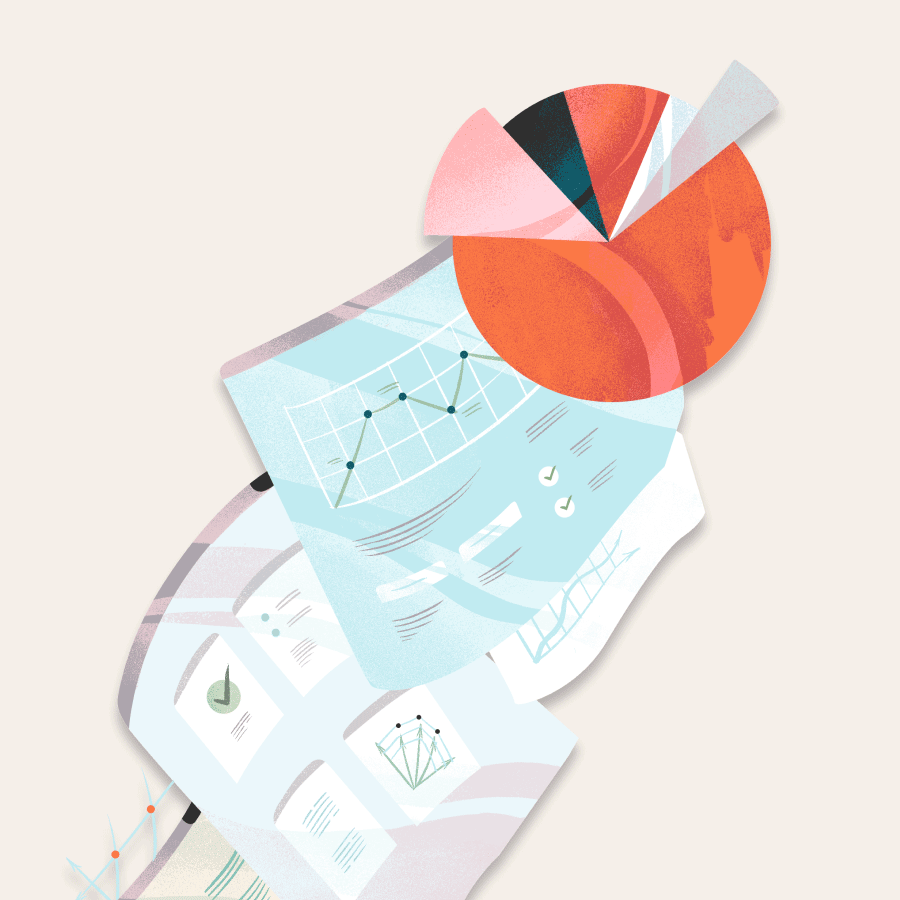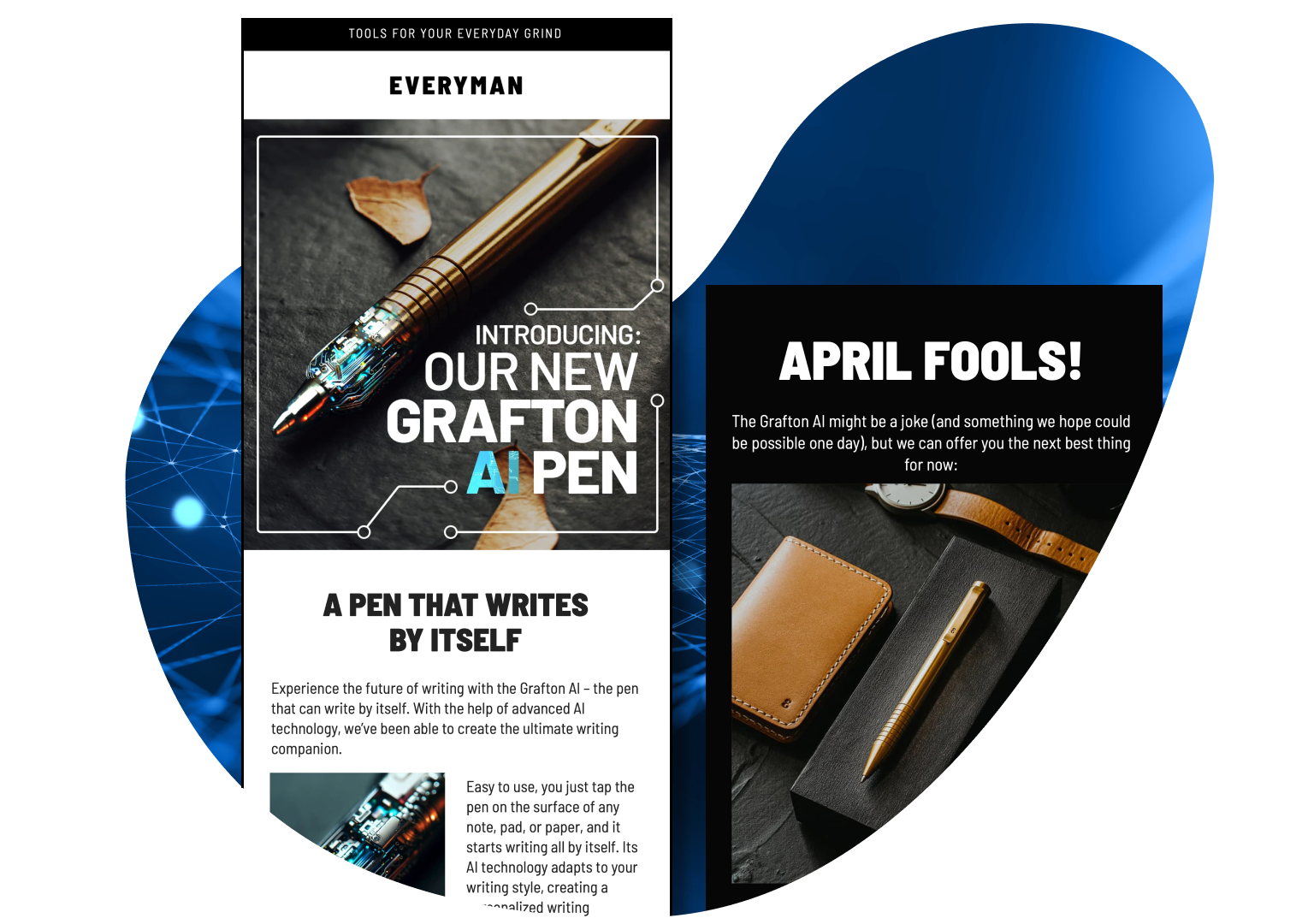
If you’re a marketer looking to increase sales and engagement with your customers, segmenting your customer base with Klaviyo is the way to go.This article will look at 9 of the most effective Klaviyo segments every marketer should use today. From new subscribers to high-value customers, these segments will help you reach the right people at the right time and maximize your conversions.
Segmenting your customers is a great way to reach the right people and maximise your conversions. Keep reading to find out some great tips as to how you can make the segments work for you and which ones you should be using.

When segmenting your customers, the purchase history is an invaluable metric. It helps you understand customer loyalty and product preferences, enabling you to tailor discounting strategies for each group of shoppers.
Take a small business owner as an example. Knowing which products are most popular with their customers allows them to focus on promotions that will bring in larger orders from returning customers or encourage new ones to try the store’s offerings.
A sale on one item might be enough incentive for someone who has only ever bought that product before, while offering free shipping could draw attention from those looking at multiple items.
By utilizing data from past purchases, businesses can create personalized experiences for every shopper they encounter — unlocking huge potential profits due to increased customer loyalty and satisfaction.
This type of segmentation gives marketers more control over how they communicate with each customer segment, allowing them to craft campaigns that stand out among the rest and generate higher conversion rates than generic messages sent without any context.

With geo-targeting and local outreach, segmenting customers by location is a great way to ensure successful campaigns. This type of segmentation allows you to target the right customer base with relevant store promotions and other messaging that will increase sales or engagement in your business.
Here are four reasons you should use location-based segments:
By leveraging Klaviyo’s segments related to geography, businesses can better understand their audience, engage them at various stages of the purchase funnel, and optimize their marketing efforts accordingly.
Segmenting customers by location has become essential for any serious marketer who wants to reach out effectively and build trust with potential buyers in their area – something that cannot be done without a good geographical targeting strategy.
Segmenting by engagement is an important part of customer segmentation. It helps you to create targeting segments that are tailored specifically to the needs of your customers. Organizing them into groups based on their engagement level makes it easier for marketers and businesses alike to personalize messages and campaigns more effectively.
Here are some ways in which you can use segmentation strategies to target these types of customers:
Overall, understanding the different levels of engagement among your customers will help you identify opportunities and develop personalized experiences that drive conversions and build long-term relationships.

Engagement is important in any audience segmentation strategy, but understanding habits and interests can also be beneficial.
Habits and interests provide insight into customers’ behavior that engagement alone can’t capture.
With A/B testing, product usage analytics, and other techniques, you can create powerful segmentations to help tailor your marketing efforts more precisely and boost conversions.
Using data collected from customer surveys or purchased third-party data sources such as Nielsen Connections Labels, you can learn about your customers’ hobbies, media consumption preferences, lifestyle choices, attitudes towards brands, travel patterns, purchase behaviors – anything that might influence their buying decisions.
This information can then be used to build custom campaign segments more accurately than ever.
Segmenting by habits and interests gives marketers clear insights into how they should target different subsets of their audiences.
For example, if one group enjoys watching Netflix while another prefers Hulu Plus, this knowledge could inform targeted offers tailored to these two groups – something which would not have been possible without a detailed understanding of their respective habits and interests.
Segmenting by demographics is a great way to group your customers according to their age range, gender identity, and other characteristics. This helps you determine which customers are most likely to be loyal. It also allows you to personalize messages tailored specifically for different demographic groups.
When segmenting by demographics, try focusing on the customer’s life stage or job role, age range, and gender identity. For example, if you’re targeting young adults aged 18-24, consider dividing that group into students and recent graduates since they may have different spending habits and interests.
You can refine these segments with more detailed data like geographical location or purchase history. By combining demographic data with purchasing behavior insights, businesses can create highly targeted campaigns to appeal directly to specific customer segments.
Keep track of what works best for each segment regarding content, timing, and offers. This approach will help you maximize customer loyalty while minimizing wasted resources on ineffective promotions.

Referral tracking can be a powerful tool. By leveraging the data collected from customers whom other customers have referred, businesses can tailor their loyalty campaigns better and reward those most likely to become repeat customers. This not only improves customer retention but also helps maximize the impact of your marketing efforts.
You must first identify which channels provide the most leads to track referrals effectively. Once this is established, monitoring how many conversions each channel produces is important to understand what type of content or rewards will best incentivize leads into becoming paying customers.
For example, if Twitter has proven itself to be an effective source of new leads, creating exclusive offers or sharing special discounts on Twitter could be beneficial to increase engagement and drive more sales.
Using Klaviyo’s segmentation feature allows marketers to easily target specific groups of people based on certain criteria such as purchase history, demographics, location, and more.
With this kind of granular targeting capabilities at your disposal, you are able to craft personalized messages that appeal directly to each customer’s needs and interests – ultimately driving higher conversion rates for your business.
When segmenting customers, it’s important to distinguish between new and existing customers. This will help you understand how effective your marketing strategies are when incentivizing customers who already have an established relationship with you versus those who don’t know about your brand.
To do this effectively, analyze customer data such as frequency of purchases or subscriptions, website visits, locations, customer feedback surveys, and more. That way, you can create specific campaigns tailored to each type of customer that is likely to yield the best results.
Data collected from these activities can be used for further analysis of which incentives are most successful in engaging customers (both old and new).
For example, if discounts are more effective than free shipping at encouraging repeat purchases from existing customers then use this information to shape future promotions. Similarly, consider what kind of rewards would entice first-time buyers – offering a complimentary product or service.
Klaviyo segments offer powerful tools for creating targeted campaigns based on customer behavior so you can get the most out of every marketing dollar spent. By leveraging insights into different customer types gleaned through careful data collection and frequency analysis, businesses can ensure their efforts result in maximum engagement across all audiences.
With this knowledge, marketers can confidently craft tactics designed to attract current and prospective shoppers alike – making sure everyone feels appreciated while generating positive ROI.
Having a segmentation strategy for new vs existing customers is essential to any successful marketing campaign. But you don’t want to stop there–you need to be able to dynamically track and segment website activity to get the most out of your customer data.
Here are two key ways that Klaviyo can help:
By taking advantage of these features within Klaviyo, you will gain superior insights into your customers’ online behavior to provide personalized experiences that drive better engagement and revenue growth over time!

Social media engagement is an essential component of any successful marketing strategy. By isolating customers engaging with your company’s content on various social platforms, you can better understand the social trends and behaviors associated with them.
Klaviyo enables you to segment customers based on their activity on each platform so that you can target influencers more effectively and analyze the performance of each channel in real time.
Using Klaviyo, you can measure how many followers a customer has, when they last posted or liked a post from your account, or whether they have shared one of your posts within the past month.
With this data, it becomes easier to identify potential ambassadors for your brand – those customers who regularly engage with your content but also have a large following base. You can then create specific campaigns and promotions tailored to these individuals and track their interactions with your brand over time.
Segmenting customers is a great way to ensure you’re targeting the right people with the right content. Klaviyo offers powerful segmentation tools which allow for maximum personalization and customization.
Here are three ways to get the most out of your segments:
By utilizing these strategies, you can maximize results from your Klaviyo campaigns and ensure each c
customer receives a tailored message at the right time.
Creating an effective segmentation strategy is key to any successful marketing campaign.
It involves analyzing your audience and customer base, profiling them based on their needs, wants, and tendencies, and optimizing your conversions with targeted messaging. Audience-based segmentation helps you tailor campaigns to specific groups of customers that are more likely to convert.
Customer profiling allows you to gain insight into the behaviors of target audiences – what they buy, how often they shop, etc. And conversion optimization ensures that each message sent has the highest chance of successfully driving sales or other desired actions from the recipient.
By leveraging these three strategies when creating a segmentation plan, businesses can ensure maximum impact for their campaigns.
Measuring the performance of customer segmentation can be an effective way to assess your personalization techniques. Analytics tracking is a key tool in understanding each segment’s performance and making adjustments where needed.
This data should be used alongside other metrics such as engagement, revenue, and retention rates to get a full picture of the success or failure of any given segment. With this information, you can adjust your Klaviyo segments for maximum impact.
Using Klaviyo segments can be a powerful way to optimize your targeting and maximize the success of your campaigns. Automated segmentation lets you quickly evaluate customer data and decide who should receive each message. Analyzing results helps you determine what worked best for specific audiences.
With segments, you can easily track engagement levels across all channels and identify key improvement areas.
The act of segmenting your customer base is a delicate one, requiring steady hands and careful analysis of data. How often should you update your Klaviyo segments? The answer to this question depends on your business type and how quickly your market changes.
To ensure effective customer segment automation, monitoring key metrics such as purchase frequency or product engagement is important to ensure your segmentation criteria remain up-to-date.
Companies can keep their Klaviyo segments fresh and relevant by regularly assessing these metrics to maximize success.
Creating an effective segmentation strategy is the key to optimizing your email campaigns and maximizing ROI. Using Klaviyo segments, you can target customers with more relevant messaging, ensure better deliverability rates, and increase engagement.
It’s important to regularly check in on how these segments are performing so that you can make any necessary adjustments. But don’t just take my word for it – give Klaviyo segments a try yourself!
With the right tools and resources, you can create powerful segments that will help you boost conversions and drive revenue. So what are you waiting for? Get started today and see the results for yourself!
Need help with Klaviyo? Contact us to learn how we can help you drive growth with Klaviyo flows.
